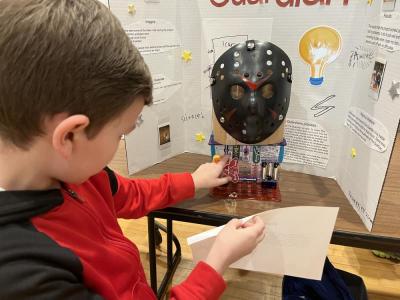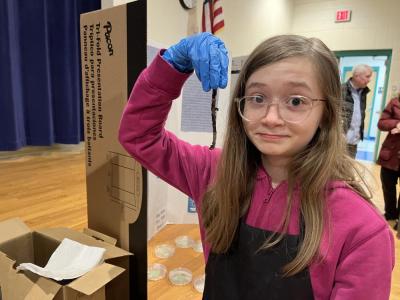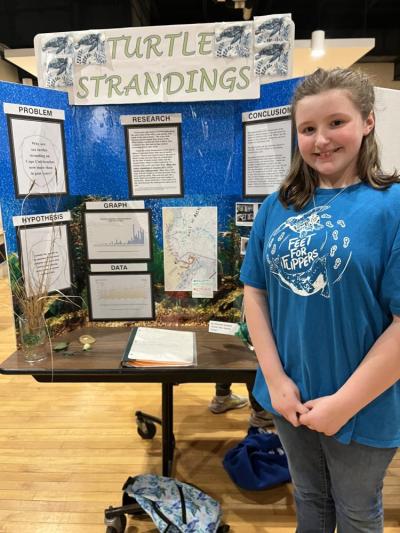Sippican School science fair returns
MARION — From sneaky younger brothers to stranded turtles, Sippican School students created science fair projects to understand and solve a variety of issues on Wednesday, March 22.
Kaylin O’Conner, 10, Talleua Lovegrove, 10 and Grayson Emnes, 11 took it upon themselves to find the truth about one of life's greatest mysteries — the five second rule.
“We were thinking, ‘huh, I dropped my food,’ wait, is the five second rule true?” Said O’Conner.
The team tested the theory by seeing if bacteria grew on pieces of candy they dropped and left on the floor for five seconds and were shocked to find a variety of bacteria growing on the Kit Kats and gummies.
“It’s all fake,” said Lovegrove.
Despite their discovery, the team chose to ignore their findings when it came to their favorite candy.
“We ate all of the gummy lobsters that fell on the floor,” said O’Conner.
This was Sippican School’s first science fair since the start of the Covid-19 pandemic, said enrichment teacher and fair organizer Chelsey Lawrence.
According to Lawrence, participation in the science fair was optional. Students worked on the projects at home.
“It's important to give students opportunities to challenge themselves and go beyond things that they do here at school and to do things that they are passionate about,” she said.
Jacob Prien, 9, used this opportunity to solve a recurring problem in his life — his younger brother sneaking into his room.
Prien created a motion-detecting alarm system complete with a scary “Friday the 13th" mask to ward off unwelcome visitors that he called “The Guardian.”
Prien used electric circuits to create a motion-sensing alarm. He demonstrated “The Guardian’s” effectiveness by waving a piece of paper in front of it, sounding the alarm.
“I used a picture [of Jason Vorhees] and a mask to make it scary,” said Prien.
Prien hopes to improve his project by adding flashing lights, scary music and giving it a set of wheels to chase would-be intruders.
Other students, such as Giovanna Goodwin, 10, used the science fair to learn more about their passions. Goodwin researched her favorite animal, the turtle, and the cause of turtle strandings along the coast.
“I found out that turtles are not stranded because of pollution and wind velocity, it has to do more with global warming in the Gulf of Maine,” said Goodwin.
According to Goodwin, the Gulf of Maine is heating up faster than other oceans, causing turtles to become sick and get stranded on the shore.
“They are so used to the water being warm that when it snaps to being cold they cannot do their normal routine,” she said.
Goodwin found that the highest number of turtle strandings occurred in 2014 with over 600 strandings in Massachusetts.
Despite the fact that Goodwin’s findings were startling, she still had fun researching her favorite animal.
“They are just really cool,” she said.



.jpeg)













